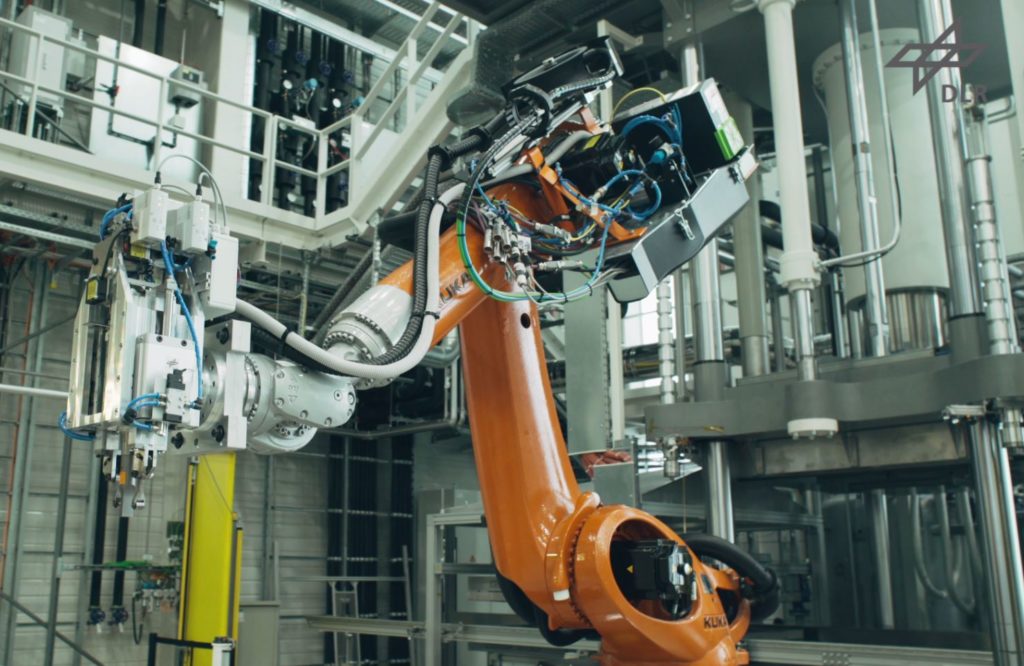Automated Production of Thermoplastic Aerospace Structures
Thermoplastic composite materials for structural aircraft components offer advantages in terms of performance, manufacturing processes and cost-effectiveness. During the production automated welding technologies are an enabler for a cost effective production. These could replace the classic joining methods optimized for metallic materials, such as riveting and the additionally required sealing. The advantages of welding are on the one hand a higher speed and on the other hand that the sequence of the final assembly can be changed, since no more chips are produced during the joining process, which can for example damage system installations. Electrical resistance welding, ultrasonic welding and induction welding are promising methods that are increasingly being used for the joining of thermoplastic fiber composites in aviation industry.
Development of a Continuous Ultrasonic Welding End-Effector
At the Center for Lightweight Production Technology (ZLP) in Augsburg a robot-based continuous ultrasonic welding system has been developed. It consists of an end-effector which is mounted on a KUKA QUANTEC KR210 industrial robot on a 7m linear track, which allows the flexible machining of huge plane and double-curved structures. The functional efficiency has already been proven on various components such as a stiffened fuselage panel or a rear pressure bulkhead. For a robust process the accuracy of the welding process was qualified via a laser tracker system which measures the pose of the end-effector during the welding process. Furthermore, the real time process data acquisition records process parameters such as pressure or welding power. This data is used during the process for an in-line quality assurance.
German Aerospace Center (DLR)
Institute of Structures and Design
Manuel Engelschall · E-Mail: manuel.engelschall@dlr.de · DLR.de
